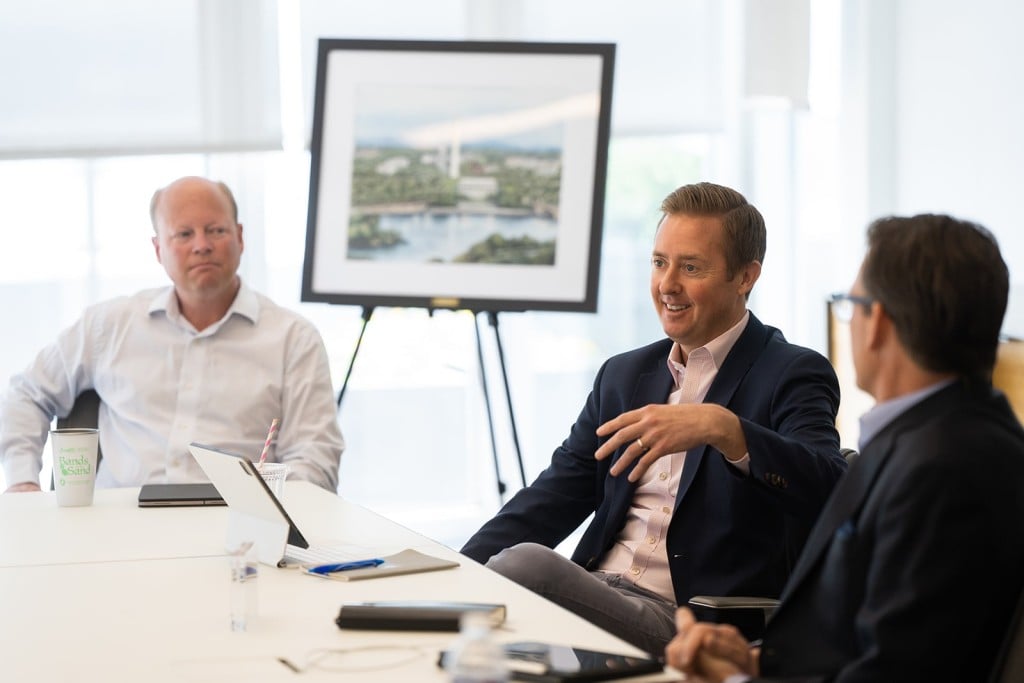Related Articles
Stay Up To Date
Something has gone wrong, check that all fields have been filled in correctly. If you have adblock, disable it.
The form was sent successfully
Advances in robotics and artificial intelligence (AI) are reshaping both industrial operations and everyday life. Sr. Director, Client Relations Kevin G. Murphy, CFA, and Portfolio Manager and Sr. Research Analyst Daniel Pilling cover the accelerating availability of compute, the use of synthetic training environments, and the economic implications of automation. Their discussion offers a forward-looking view of how these technologies may unlock new efficiencies and redefine the value of time.
Transcript
Kevin Murphy: When will we start to see robotic technology move from very task-specific and very easy compute sort of questions and problems to something that actually is more agentic? I guess they’re living with us in the real world and helping us?
Daniel Pilling: Yes. The timing is very hard to think about. But I think we do know a few things. We know that the amount of compute in the world is going to go up tremendously in the next few years. We know that means that we can train better models for the robots. We furthermore know that robots live in a verifiable universe.
What I mean with that is that there’s a product called NVIDIA Omniverse, where you can create synthetic data to train the robots, right? We know physics is pretty verifiable, for better or worse. And then you put that into this digital world. And then you have these robots running around doing things, and they will provide real-world data for you. You can train your robot on that, and your robot improves.
Precisely timing-wise, I’m not sure. But when I correlate those two things—much more compute, and actually also no bottleneck on data—it seems like it’s just a question of time before we have really two big sets of robots. One, industrial robots that will run around the factories. And for what it’s worth, we’re tracking a joint venture between a private company called Figure, with BMW. That’s something to track. I think that’s one of the bigger use cases for now, which is still quite small. But that’ll happen, and I think that’ll be very important for manufacturing efficiencies.
And then the second one, which I would guess maybe takes a little longer, because it’s a little more sensitive, but it’s just robots in your house that do your chores, and cook, and do whatever you need. And what I like about that, too, it’s not just the robot itself, but the big question is going to be, what are we going to do with those two or three incremental hours in our life? How do we spend that? And who wins, right?
Because if you roll back to COVID times, people staying inside their houses had a massive ramification on what they consume, when, and why. There were big, big companies that really benefited, and some didn’t benefit. And then same here, right? We can think through what happens with those incremental hours.
Examining the Broader Economics of AI Adoption
Kevin Murphy: I think that’s an interesting view on the efficiency gains from robotics saving time. I don’t think people really think about that. And what you’ll do with that time. But that’s a nice segue into the economics of AI.
Right now, artificial intelligence economics remain challenged. The training costs far outweigh the returns people are getting from using them. When do you see that gap closing? And is that the right way to think about it?
Daniel Pilling: Yes. We already discussed a little bit that there’s some companies that really benefited, right? There’s real dollars behind it already within social media. Some software companies are ramping revenues—some of them we discussed.
But net-net, you’re right. Maybe if you compare how much revenue has been generated to how much capex has been invested, maybe the ratio seems a little bit unusual. But I think another way of thinking about this, though, might be like this: We’re going through a replatforming. And I think the natural tendency for all of us is to say, “Well, okay, what’s the revenue for this?” But there may be another view.
You might say, let’s take an example of an industry with five players—highly commoditized—and all these players have pretty tight margins, like 10 percent margins. And AI shows up. If you don’t implement AI, your peers will become much better in that industry. It’s a low-margin industry. What happens is that every player implements AI. They all become more competitive on the cost side and on the marketing side. But the market is capped.
Ultimately what happens is the revenue pool stays the same. The margins probably move down slightly because they now have this AI cost, which, by the way, goes to NVIDIA. And net-net, it’s very hard to say, “Where’s the revenue for AI here?”
The true ROI [return on investment] here for one of those five players is: you stayed in business. That’s the ROI. You survived. A great historical example might be when electricity came to the fore 100 years ago. If you were a manufacturing business and didn’t use electricity, you’d go out of business in five to 10 years. If you started using electricity, you’d become more effective.
Maybe in that case, your market even expanded because your product prices would go down. So maybe it’s not entirely “apples to apples,” but still, it’s not too dissimilar. If you don’t implement AI, you’re going out of business. And that doesn’t show up in any revenue statistics, really.
I’m not entirely sure whether we should just look at revenue divided by capex, because some stuff will just not show up in revenue.
Disclosures:
The views expressed are the opinion of Sands Capital and are not intended as a forecast, a guarantee of future results, investment recommendations, or an offer to buy or sell any securities.
The views expressed were current as of the date indicated and are subject to change. This material may contain forward-looking statements, which are subject to uncertainty and contingencies outside of Sands Capital’s control. Readers should not place undue reliance upon these forward-looking statements. All investments are subject to market risk, including the possible loss of principal. There is no guarantee that Sands Capital will meet its stated goals. Past performance is not indicative of future results. A company’s fundamentals or earnings growth is no guarantee that its share price will increase.
Differences in account size, timing of transactions, and market conditions prevailing at the time of investment may lead to different results, and clients may lose money.
Unless otherwise noted, the companies identified represent a subset of current holdings in Sands Capital portfolios and were selected on an objective basis to reflect holdings enabling or potentially benefitting from the adoption of generative artificial intelligence.
As of June 17, 2025, Sands Capital strategies hold positions in NVIDIA.
Any holdings outside of the portfolio that were mentioned are for illustrative purposes only.
The specific securities identified and described do not represent all of the securities purchased, sold, or recommended for advisory clients. There is no assurance that any securities discussed will remain in the portfolio or that securities sold have not been repurchased. You should not assume that any investment is or will be profitable. GIPS Reports found here.
References to “we,” “us,” “our,” and “Sands Capital” refer collectively to Sands Capital Management, LLC, which provides investment advisory services with respect to Sands Capital’s public market investment strategies, and Sands Capital Alternatives, LLC, which provides investment advisory services with respect to Sands Capital’s private market investment strategies, including the Global Innovation strategy, which is available only to qualified investors. As the context requires, the term “Sands Capital” may refer to such entities individually or collectively. As of October 1, 2021, the firm was redefined to be the combination of Sands Capital Management and Sands Capital Alternatives. The two investment advisers are combined to be one firm and are doing business as Sands Capital. Sands Capital operates as a distinct business organization, retains discretion over the assets between the two registered investment advisers, and has autonomy over the total investment decision-making process.
Information contained herein may be based on, or derived from, information provided by third parties. The accuracy of such information has not been independently verified and cannot be guaranteed. The information in this document speaks as of the date of this document or such earlier date as set out herein or as the context may require and may be subject to updating, completion, revision, and amendment. There will be no obligation to update any of the information or correct any inaccuracies contained herein.















